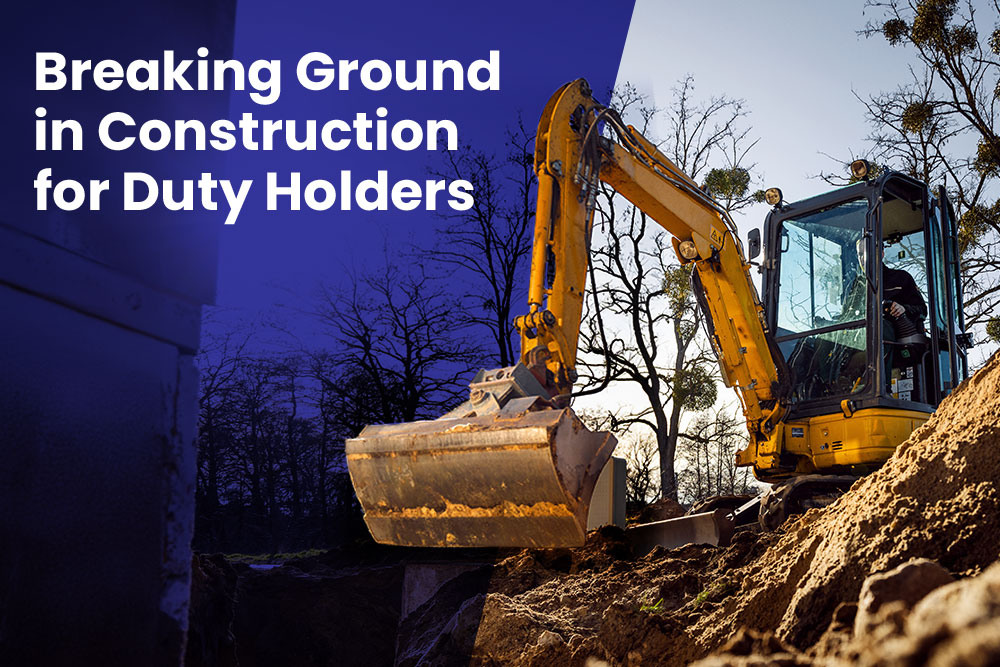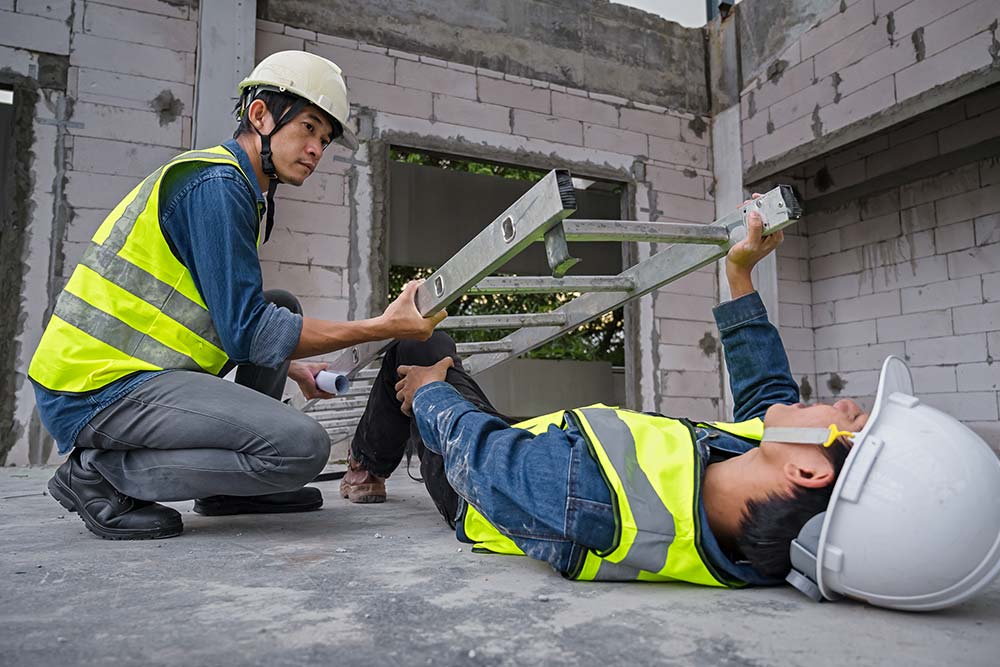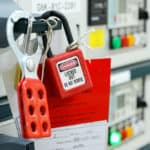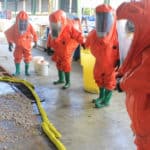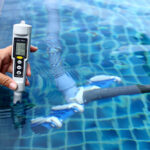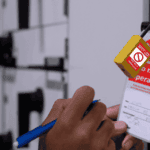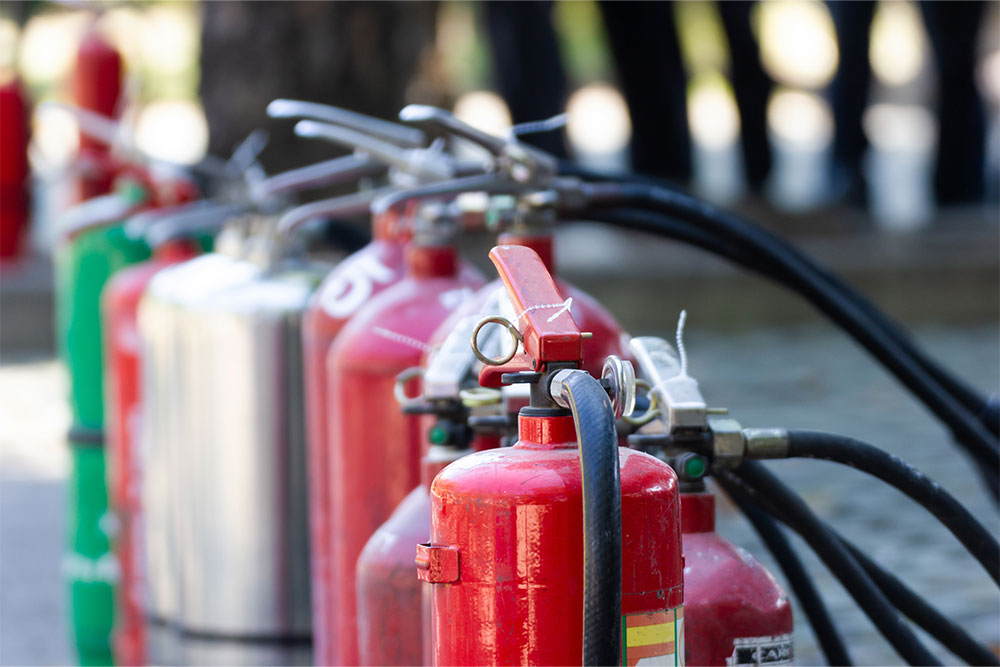
If you work on or manage a construction site, you already know fire is one of the biggest risks. With timber, fuel, gas almost always around, fires can start fast and spread quickly,
To manage fire risks, construction site fire extinguishers are essential.
This guide explains the different types of extinguishers you might need and how to determine where and how many are required to ensure fire safety and compliance on your site.
Key Takeaways: Construction Site Fire Extinguishers
- Different fire classes (A, B, C, etc.) need specific extinguisher types.
- Common extinguisher types include water, foam, dry powder and carbon dioxide (CO2).
- Choose extinguisher types based on site risks, such as fuels, electrical tools, or welding.
- Place extinguishers near exits, escape routes and high-risk zones.
- Keep a record of all checks and servicing.
- Train workers to recognise fire types and use extinguishers safely.
Why Are Fire Extinguishers Needed on Construction Sites?
Construction sites are filled with fire hazards. Power tools, cutting equipment or welding work can all provide the heat needed to start a fire, which will find plenty of fuel, wood and waste to burn and spread. Buildings under construction also typically lack alarms, fire doors and sprinkler systems, making it harder to control fires once they start.
Because of this risk, the Regulatory Reform (Fire Safety) Order 2005 requires every employer to assess fire risks and provide necessary fire precautions in the workplace. This duty applies to construction sites, too, since they’re a workplace.
“Fire precautions” include having enough fire extinguishers of the correct type and placement for your site. Failure to provide enough suitable fire extinguishers can lead to fines or enforcement notices, site shutdowns, prosecution and increased insurance costs.
Fire Extinguisher Inspection Training
Our Fire Extinguisher Training course provides the know-how to work competently in case of a fire hazard. It provides vital information on the different types of fires, types of extinguishers and the right selection of the extinguisher in the event of a particular fire hazard.
Classes of Fires
Fires are classified based on the materials burning. Knowing these classes will help you choose the right extinguisher.
- Class A: Fires involving solid materials like wood, paper and textiles.
- Class B: Fires involving flammable liquids such as petrol, paints and oils.
- Class C: Fires involving gases like propane, butane or methane.
- Class D: Fires involving combustible metals like magnesium or aluminium.
- Class F: Fires involving cooking oils or fats.
There’s officially no class E. Electrical fires are sometimes considered class E, but this isn’t recognised under UK fire classifications. Fires involving electrical equipment are just electrical fires. They still need a specific type of extinguisher, though, such as CO2 or dry powder.
On construction sites, Class A, B, C and electrical fires are the most common.
Different Types of Fire Extinguishers
There are different types of fire extinguishers for each class of fire. Each extinguisher’s label is colour-coded for quick recognition:
- Water (Red): Best for Class A fires. Never use this type of extinguisher on electrical or flammable liquid fires.
- Foam (Cream): Suitable for Class A and B fires. Can be used near electrical equipment if tested.
- Dry Powder (Blue): Suitable for Class A, B, and C fires, plus electrical fires. Very versatile but creates a lot of dust.
- CO2 (Black): Best for electrical fires and Class B fires. Leaves no residue but has a limited range.
- Wet Chemical (Yellow): Designed for Class F fires, mainly used in kitchens.
For most construction sites, dry powder, foam and CO2 extinguishers are required. But using the wrong type can make a fire worse, so always refer to your fire risk assessment and make sure you’ve selected the right extinguisher for the risk.
Construction Site Fire Extinguishers
The right extinguisher depends on the type of work you’re doing and what flammable materials are present.
1. General Construction Areas
Use foam or dry powder extinguishers. They’re designed for wood, paper, fuel and electrical fires. Dry powder gives wide coverage, but foam creates less mess.
2. Areas With Electrical Equipment
It’s best to use CO2 or dry powder around electrical equipment.
CO2 is clean and won’t damage the equipment, but it’s less effective outdoors. Dry powder works better outside and in freezing temperatures.
3. Welding or Hot Works Areas
Use dry powder. It covers flammable gases and metals.
Be aware that if you’re dealing with combustible metals, you may need special Class D extinguishers.
4. Fuel Storage or Paint Areas
Use foam or dry powder. These handle flammable liquids well.
How Many Fire Extinguishers Do You Need?
There’s no hard and fast rule for fire extinguisher numbers, but the British Standard BS 5306-8 offers guidance.
Generally, you should have at least two Class A extinguishers on every floor of a construction site.
Additional extinguishers may be needed in higher-risk areas, such as:
- Hot work zones (e.g. welding or cutting)
- Fuel or gas storage areas
- Temporary electrical setups
Make sure that workers can reach an extinguisher within 30 metres from any point on site. A fire risk assessment will help you determine exactly how many extinguishers are needed in each area.
Placing Construction Site Fire Extinguishers
Fire extinguishers must be easy to find and quick to reach in an emergency. Place them:
- Along escape routes
- Near exits and stairwells
- At clearly marked fire points
- Next to known fire hazards like hot works or flammable storage
Mount extinguishers on brackets or stands and clearly mark each location with signage. Avoid blocking or hiding them behind tools, vehicles or materials.
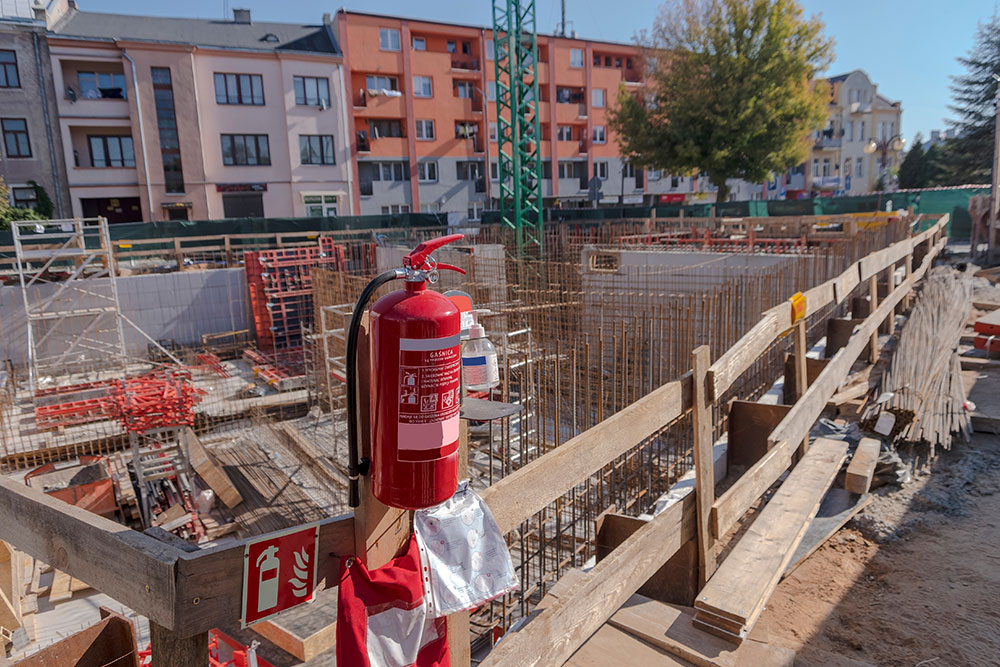
Checking and Maintaining Fire Extinguishers
To make sure fire extinguishers work when needed, you must inspect and maintain them regularly:
- Weekly visual checks – Make sure each extinguisher is in the right place, undamaged, and has full pressure.
- Monthly inspections – Check seals, labels and access, and replace missing or faulty equipment.
- Annual servicing – Must be carried out by a trained fire extinguisher technician.
- Keep a log – Record all checks, maintenance, and replacements in a site fire logbook.
Official UK Guidance
The Health and Safety Executive (HSE) and the Fire Industry Association (FIA) provide guidance on fire safety for construction.
The most important duty is completing a fire risk assessment for the site, which falls to the “responsible person”.
The responsible person is typically the principal contractor. They’re accountable for planning fire precautions ahead of work starting and maintaining them as the project progresses.
A fire safety plan must also be drawn up. Again, this is a responsibility of the principal contractor. The plan must clearly show all fire precautions, including fire extinguisher types and placement on your site. Workers should also be trained to use these fire extinguishers safely.
Fire precautions must also be reviewed regularly, especially as work progresses and risks change.
Fire Safety Training for Workers
Even if extinguishers are available, they’re useless, or even dangerous, if people don’t know how to use them. Fire extinguisher training should be part of your site induction or fire safety programme.
We offer a fire extinguisher course to give workers clear, practical instruction on using fire extinguishers correctly.
It teaches workers:
- When to use an extinguisher and when to evacuate
- Which extinguisher to use for each fire type
- How to operate extinguishers safely
The course is ideal for all site workers, supervisors and fire wardens who need basic extinguisher awareness.
